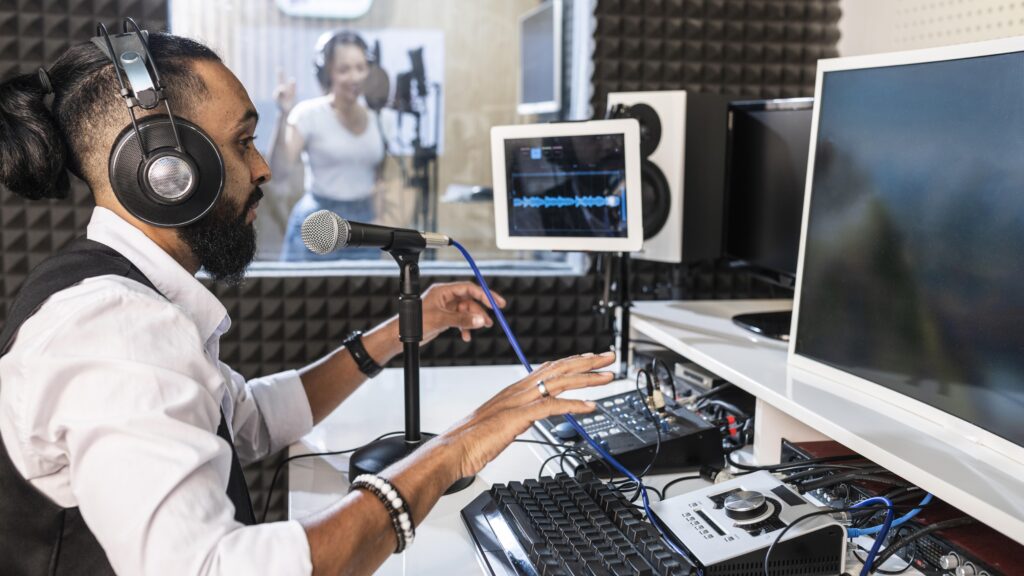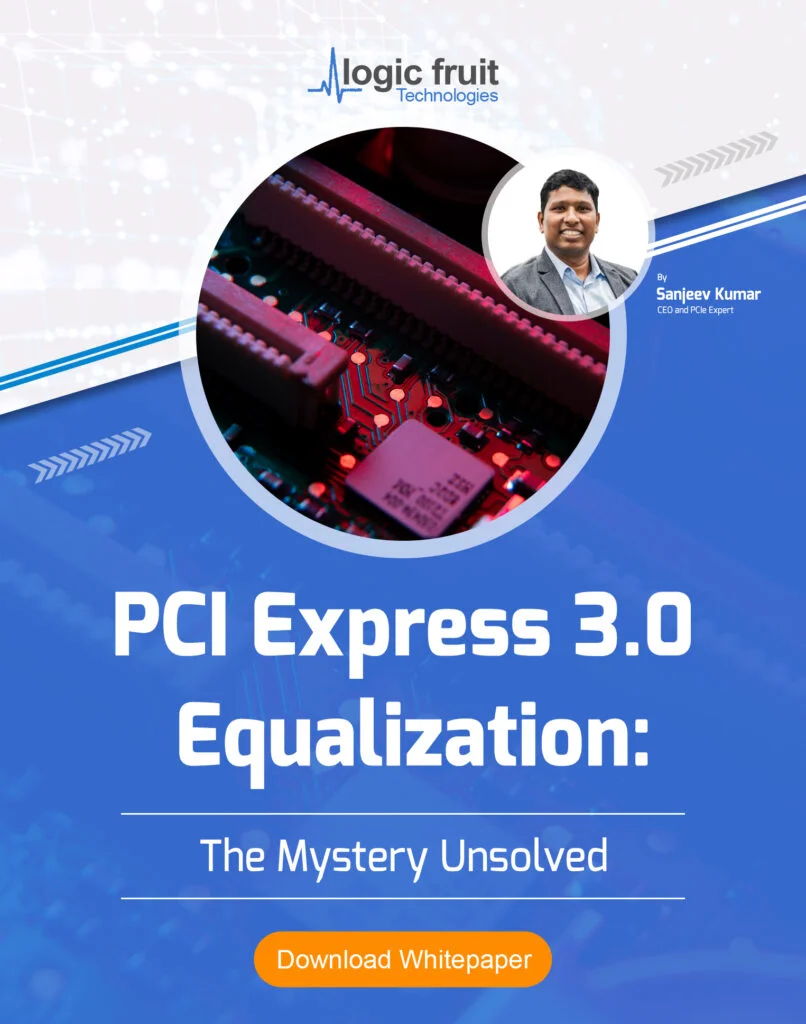From the clarity of a phone call to the immersive experience of a blockbuster movie, sound quality is crucial to how we engage with consumer devices. Pursuing pure sound has been an ongoing quest, and one technology in particular—Field-Programmable Gate Arrays, or FPGA—has emerged as a game-changer in this endeavor. This essay investigates how FPGA technology is transforming audio processing and greatly boosting consumer electronics’ sound quality.
In the field of audio engineering, FPGAs—originally created for telecommunications and industrial applications—have a new use. Engineers can now fine-tune audio signals with unmatched precision thanks to their adaptability and real-time processing capabilities, ushering in a new era of audio quality.
We’ll examine the foundations of FPGA technology, its design, and its uses in music and audio processing in this essay. We’ll also provide some insights into how this technology is transforming how we hear sounds in consumer electronics.
Audio Signal Processing Fundamentals
Audio signal processing forms the foundation of understanding how FPGA technology can enhance sound quality in consumer electronics. In this section, we will explore the fundamental principles of audio signal processing, its core components, and the challenges it addresses.
A. Basics of Audio Processing
Sampling and Digital Representation: Analog sound waves are transformed into digital signals to start the audio processing process. By “sampling,” which is used in this procedure, continuous analog audio is discretely measured at predetermined intervals. The audio waveform is thus represented digitally, allowing for manipulation and processing.
Common Audio Processing Tasks: Filtering, equalization, and modulation are just a few of the processing steps that audio signals go through. Filtering aids in the elimination of unwanted noise or the shaping of the audio frequency response, whereas equalization modifies a range of frequencies to get the best tonal balance. Modulation methods change audio characteristics to produce artistic effects.
B. Challenges in Audio Processing
Noise Reduction and Audio Enhancement: The reduction of undesirable noise and the augmentation of desired audio components are two of the biggest problems in audio processing. Signal and noise are separated by noise reduction algorithms, which enhance the audio quality overall. These algorithms are essential for providing crystal-clear audio in a variety of settings.
Real-time Processing Requirements: Many applications, such as live music performances, gaming, and teleconferencing, demand real-time audio processing. This imposes strict requirements on latency (delay) and processing speed. Achieving low-latency, high-quality audio processing is crucial for a seamless user experience.
It is crucial to comprehend these basic principles of audio signal processing in order to fully grasp how FPGA technology might improve consumer devices’ audio quality. Engineers can efficiently address these problems and provide improved audio experiences because of the FPGA’s distinctive architecture and capabilities. We will examine the specific ways that FPGA improves audio processing in the sections that follow, including synthesis, audio codecs, and real-time effects.
FPGA Applications in Music and Audio Processing
FPGA technology, with its reprogrammable and parallel processing capabilities, has ushered in a new era of audio processing, allowing for unprecedented precision and efficiency. In this section, we will delve into the diverse applications of FPGA in music and audio processing, highlighting its role in revolutionizing sound quality.
A. FPGA for Real-time Audio Processing
FPGA technology’s extraordinary efficiency at real-time audio processing makes it one of its most notable qualities. Live music performances, professional audio production, and online gaming are just a few examples of applications that require real-time audio processing since low latency is so important.
Low-latency Processing Capabilities: FPGA’s parallel processing architecture enables the execution of complex audio algorithms with minimal delay. This ensures that audio signals are processed swiftly and delivered to the listener’s ears without perceptible lag, creating a seamless and immersive audio experience.
Real-time Audio Effects and Mixing: Musicians, audio engineers, and gamers benefit from FPGA’s real-time capabilities to apply effects, mix audio sources, and modify the sound in real-time. This allows for creative experimentation and precise control over audio output, enhancing the overall quality of the sound.
B. FPGA in Audio Codecs
Audio codecs play a pivotal role in audio processing, especially in the realm of digital audio transmission and storage. FPGA technology has significantly impacted the development and deployment of audio codecs, offering unique advantages.
Compression and Decompression Techniques: Audio data is compressed by audio codecs before being decompressed for playback in order to make files smaller for storage or transmission. The versatility of FPGA enables codec implementations that are effective and high-quality, minimizing loss of audio fidelity during compression and decompression.
Maintaining Audio Quality During Compression: FPGA’s parallel processing prowess ensures that audio codecs can maintain audio quality, even at high compression ratios. This is crucial in scenarios where conserving bandwidth or storage space is essential without compromising sound fidelity.
C. FPGA-based Audio Synthesis
Audio synthesis, the process of generating sound electronically, has evolved significantly with FPGA technology. FPGA’s computational power and configurability have opened up new horizons in sound synthesis.
Sound Synthesis Techniques: FPGA can implement various sound synthesis techniques, such as wavetable synthesis, physical modeling, and FM synthesis, with precision and flexibility. This allows for the creation of a wide range of lifelike and creative sounds in musical instruments, synthesizers, and sound effects.
Role of FPGA in Synthesizing High-quality Audio: FPGA’s ability to handle complex algorithms and parallel processing is particularly advantageous in synthesizing high-quality audio. Musicians and sound designers can achieve nuanced and realistic sonic textures, elevating the overall sound quality of their creations.
D. FPGA in Digital Audio Workstations (DAWs)
Digital Audio Workstations (DAWs) are essential tools for music production, and FPGA technology has found its place in enhancing their performance.
Enhancing the Performance of Audio Software: FPGA accelerators integrated into DAWs can offload computationally intensive audio processing tasks from the host CPU, freeing up resources for other critical tasks. This results in smoother, more responsive DAWs and allows for more complex audio processing in real time.
Reducing Latency for Musicians and Producers: For musicians and producers, low latency is imperative when recording and monitoring audio. FPGA-based solutions help minimize latency, ensuring that musicians can perform and record with precision and responsiveness.
In conclusion, FPGA technology has achieved significant advancements in music and audio processing by enabling real-time audio effects, improving audio codecs, strengthening the performance of digital audio workstations, and expanding sound synthesis capabilities.
These programs work together to improve consumer devices’ audio quality by giving users an immersive and unmatched audio experience. In the parts that follow, we’ll look at actual case studies and instances of consumer electronics companies enhancing their products’ audio quality by utilizing FPGA technology.
Challenges and Considerations
While FPGA technology holds immense promise in enhancing sound quality in consumer electronics, its implementation also presents certain challenges and considerations that need to be addressed for successful integration.
A. Cost and Complexity
Cost-Benefit Analysis: The final price of consumer electronics may increase as a result of the sometimes high cost of FPGA chips. To make sure that their products are in line with consumer demand, producers must carefully balance the advantages of FPGA-enhanced sound quality against the potential rise in product cost.
Complexity in FPGA Design: Designing and programming FPGAs can be a complex and specialized task. Manufacturers need to invest in skilled engineers and resources to develop and maintain FPGA-based solutions, adding complexity to the product development process.
B. Power Consumption
Power Efficiency and Optimization: FPGAs are known for their computational power, but this also means they can consume significant power. Balancing performance with energy efficiency is crucial, especially in battery-powered devices like smartphones and portable audio players.
Thermal Management: FPGA chips can generate heat during operation. Effective thermal management is necessary to prevent overheating and maintain the stability and longevity of consumer electronics.
C. Accessibility and Standardization
Accessibility to Smaller Manufacturers: While prominent brands have integrated FPGA technology into their products, smaller manufacturers may face barriers in accessing and adopting FPGA solutions due to cost and technical expertise constraints.
Standardization and Open-Source FPGA Designs: The creation of open-source FPGA designs and standardization initiatives can democratize access to FPGA technology, making it more affordable and available to a wider range of manufacturers and innovators.
To ensure that FPGA technology may be efficiently used to improve sound quality without sacrificing the accessibility and affordability of consumer devices, it is crucial to take these issues into account. We anticipate improvements in low-cost FPGA solutions and greater standardization as the technology develops and spreads.
Conclusion
Enhancing sound quality has benefited greatly from the incorporation of Field-Programmable Gate Array (FPGA) technology into consumer devices. We have discussed the foundational ideas of audio signal processing throughout this essay, as well as the various ways that FPGA is used in music and audio processing and its effects on real-world case studies. In this context, we have also taken into account the difficulties and potential developments related to FPGA technology.
Let’s wrap up by saying that FPGA technology has become an essential instrument for improving sound quality in consumer devices. Manufacturers have been able to create audio experiences that meet and surpass the expectations of customers, audiophiles, and experts alike because to its ability to do real-time audio processing with minimal latency, optimize audio codecs, and enhance sound synthesis capabilities. FPGA has been used by companies like Sony, McIntosh, Audeze, and Meridian to develop products that raise the bar for audio quality.
Despite this, there are still issues with cost, complexity, power consumption, and accessibility that must be resolved by continued innovation and industry cooperation. Future trends look bright, especially when it comes to the application of artificial intelligence with FPGA technology in new consumer electronics like augmented and virtual reality.
FPGA is a symbol of the constant pursuit of audio perfection in consumer electronics in this dynamic environment. It emphasizes the makers’ dedication to providing consumers with products of sound quality that not only live up to their expectations but also enhance their sensory experiences. FPGA remains at the fore of the path to make sure that the sound we experience from our devices is as rich, immersive, and authentic as the world of audio itself as technology continues to advance.


![What is FPGA Introduction to FPGA Basics [2023] computer-chip-dark-background-with-word-intel-it](https://fpgainsights.com/wp-content/uploads/2023/06/computer-chip-dark-background-with-word-intel-it-300x171.jpg)










1 thought on “FPGA in Music and Audio Processing: Elevating Sound Quality in Consumer Electronics”